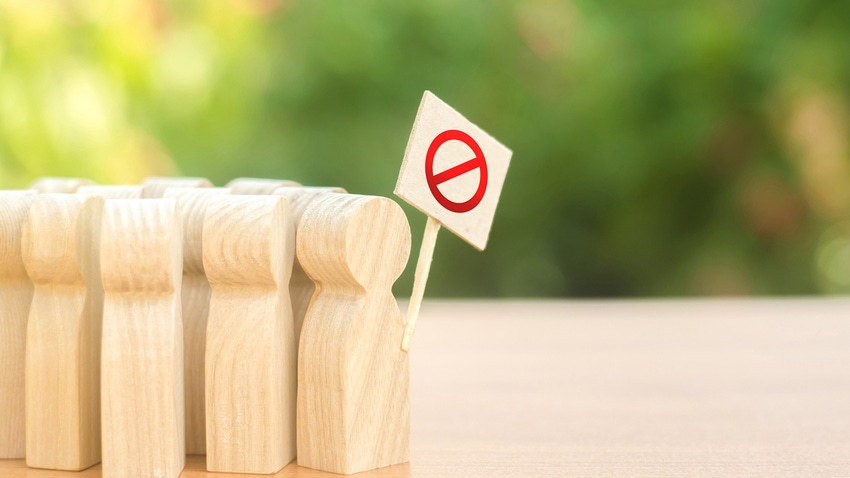Resin Price Report: PE, PP Prices Retreat as Buyers Mount Resistance
Pushback from buyers causes Prime PE to shed $0.015/lb and PP to give up $0.02/lb.
March 22, 2024

Spot resin trading took a breather last week from the feverish pace we have grown accustomed to the past several months, reports the PlasticsExchange in its Market Update. Nevertheless, completed volumes were still well above the weekly 2023 average at the resin clearinghouse.
The flow of polyethylene (PE) and polypropylene (PP) railcars was relatively light, but there was steady demand for ready-to-ship packaged truckloads, and PE transactions outstripped PP. Strong export demand continued.
Buyers push back on rising resin prices
Commodity resin prices have risen at a steady pace since the beginning of the year. PE has climbed $0.05 to 0.07/lb, depending on grade, while PP advanced $0.11/lb. Buyers have started to push back in both the domestic and export markets. Consequently, Prime PE prices pulled back $0.015/lb at the PlasticsExchange trading desk the week of March 11, and PP prices dropped a little more, retreating $0.02/lb as the polymer-grade propylene (PGP) monomer run has stared to sputter. Producers are still pushing for a mostly $0.03/lb increase for March PE contracts and PP will see another cost-push increase, now targeting $0.04/lb or so. There is a $0.02 to 0.03/lb margin-enhancing increase on the table for PP, as well, according to the PlasticsExchange.
All PE grades peel off $0.015/lb
PE trading activity stayed strong through mid-month and some transactions were aided by lower prices, as all grades peeled off $0.015/lb. While replacement costs continued to climb, overall asking prices seemed to have become over-extended, representing the first decline in PE spot levels at the PlasticsExchange since December.
Film-grade linear-low-density (LLD) PE held the top spot as the major mover, followed by high-density PE for blow molding and low-density (LD) PE for film. Producers continued to favor the export market to move incremental volumes, keeping the domestic market snuggly supplied. Overall availability has generally been ample, though clearly not abundant, and certain resins are particularly tight. That is the case for LLDPE for both injection and roto-molding, LDPE for injection, as well as EVA and POE resins.
PE resin rates 85% under capacity
Preliminary supply/demand results for February were released by the American Chemistry Council (ACC), which showed:
PE rates improved a little, but remained under 85% of capacity;
domestic sales grew to 2.5% above the trailing 12-month average;
exports declined compared with January but remained strong and were 5% above the 12-month average, accounting for 47% of total PE sales.
When the dust settled, producers’ collective inventories yielded a small drawdown and entered March about 100 million pounds below the 12-month average. Even as PE producers seek to implement March increases of 3 to 5 cents/lb — the same one that did not take in February — nominations for another $0.03/lb hike in April are being floated.
PP trading rally hits pause
PP trading declined from the previous week as the rally paused, but a solid amount of material still changed hands. After holding flat the first full week of March in the face of PGP easing $0.015/lb, prices for homo- and copolymer PP slid two cents, as PGP slipped another $0.015/lb, bringing the two-week spot PGP cost relief to $0.03/lb.
Homo-polymer PP transactions led through March 13, but co-polymer PP was the main mover in the back half of the week, slightly outselling homo-polymer PP by close of business on March 15, reports the PlasticsExchange. As usual, Prime saw the most action while relatively little wide-spec changed hands. Aside from monomer prices receding, the PP price decline comes on news that Ineos lifted its force majeure on PP, while Braskem and Invista remain on the list.
According to ACC data from the March 15 Market Update, PP producers ran their reactors harder in February, but were still below 80% of capacity. Domestic sales were just shy of the trailing 12-month average, while exports slowed, making up less than 5% of total PP sales. When February ended, upstream PP inventories had grown slightly and were about 50 million pounds above the 12-month average. For a more detailed look, readers are encouraged to subscribe to the American Chemistry Council.
On the contract front, March PP remains on track to realize another increase in the four-cent range because of rising monomer costs, which are still up markedly this month.
Read the full Market Update on the PlasticsExchange website.
About the Author(s)
You May Also Like




